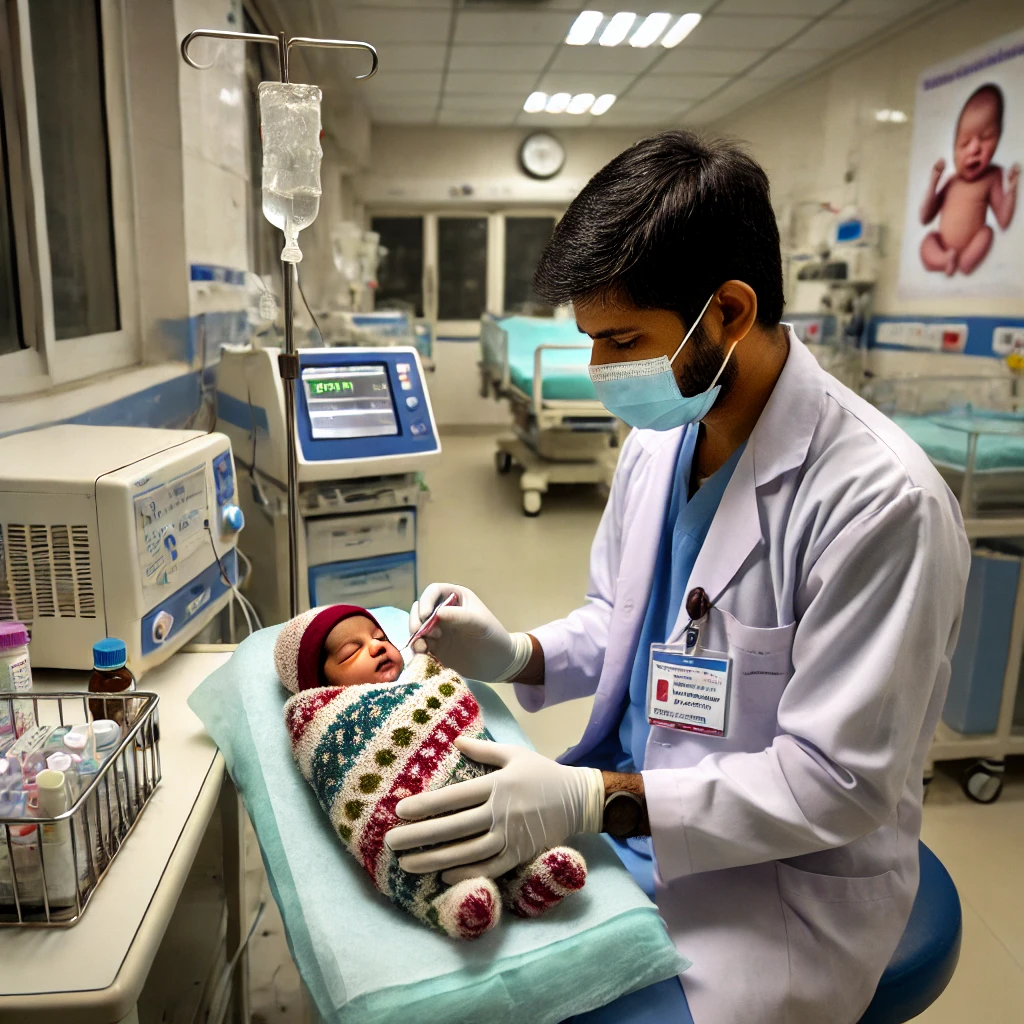Newborn Screening: A Key Strategy for Reducing Neonatal Mortality in India
A feasibility study by India's Science and Engineering Research Board highlighted the need for a nationwide Newborn Screening (NBS) program to prevent metabolic disorders, emphasizing robust infrastructure, training, and community awareness to improve neonatal health outcomes. Despite challenges in logistics and follow-up, implementing NBS could significantly reduce neonatal mortality and enhance long-term health benefits.

In a country with a burgeoning population like India, where 27 million children are born annually, accounting for one-fifth of all global births and a significant portion of neonatal deaths, integrating comprehensive health interventions poses a formidable challenge. Newborn Screening (NBS) is a critical early preventive healthcare measure aimed at intact survival and reducing neonatal mortality. The precise burden of metabolic errors across Indian states is largely unknown, and no nationwide mandated NBS program exists. This prompted a feasibility study by the Science and Engineering Research Board (SERB) of India's Department of Science and Technology in Delhi State from November 2014 to April 2017, executed through a public-private partnership, which highlighted essential factors and limitations for the effective implementation of a universal NBS program at the national level.
A Nationwide Priority for Newborn Screening
Despite a notable decline in infant mortality rates in recent years, India has not prioritized NBS nationwide. Successful pilot NBS programs in Chandigarh and Kerala offer encouraging insights, yet a national consensus on NBS implementation remains elusive. The study by SERB focused on five treatable metabolic disorders: congenital hypothyroidism (CH), congenital adrenal hyperplasia (CAH), biotinidase deficiency, galactosemia, and glucose-6-phosphate dehydrogenase (G6PD) deficiency. The study recruited 203,400 newborns from 20 public and private hospitals in Delhi. Blood samples were collected and screened for the selected disorders using biochemical and immunoassay techniques. The study aimed to evaluate the effectiveness of NBS and its potential scalability at a national level. Institutional review board approval was obtained, and informed consent was secured from parents or guardians.
Key Findings and Challenges in Implementation
The feasibility study revealed several key findings and challenges. Firstly, national planning and implementation of a core panel of disorders for screening are essential. This panel should be based on the significant impact on child health, disease incidence, treatment availability, and cost. Effective NBS requires robust infrastructure, financial resources, testing expertise, and a unified national body to oversee implementation. The absence of such a body and the need for a coordinated approach across India’s diverse socio-demographic landscape are significant barriers. Secondly, integrating NBS into the existing healthcare system is crucial. With institutional deliveries now prevalent, the length of stay after childbirth varies, complicating sample collection. Public health programs need to address these disparities and ensure early and efficient sample collection and transport. Continuous training of healthcare personnel and educating the public about the importance of NBS are also crucial. Utilizing community health workers and media campaigns can enhance awareness and acceptance of NBS.
The Economic and Social Benefits
Moreover, a cost-benefit analysis is imperative. The financial burden of preventable diseases far exceeds the cost of screening. Investing in NBS is cost-effective in the long run, with substantial benefits for families and society. Screening for CH, for instance, costs only USD 5 per test, a minimal expense compared to the lifelong costs of untreated CH. Effective communication with healthcare providers and families is essential for follow-up testing. Challenges include early hospital discharges, unreliable contact details, and parental refusal of follow-up testing. Pre-test counseling and an ‘opt-out’ approach could improve compliance. Efficient sample transport is critical. While courier services and postal services offer reliability, dedicated transport networks ensure sample integrity but require significant investment.
Moving Towards Comprehensive Implementation
Establishing a comprehensive NBS program in India involves multiple facets: national planning, healthcare integration, training, community awareness, cost-benefit analysis, follow-up, and logistical efficiency. A successful NBS program requires collaboration among healthcare professionals, public health authorities, and the community. Addressing these challenges could significantly improve neonatal and societal health outcomes, aligning with the goals of India's Newborn Action Plan to reduce neonatal mortality to single-digit figures by 2030. This narrative is by no means a complete list of factors and concerns in the successful planning and roll-out of a program in a low- and middle-income country like India. Developing support for the implementation of NBS requires three arms of education to ensure neonatal and societal health and reduce the genetic disease burden. Within the health sector, awareness of the value of screening must be developed among healthcare professionals in pediatrics and maternity care from the time screening is planned and then included in sustained training. Importantly, healthcare funders, both public and private, need to recognize the importance of NBS. In the community, increased knowledge of the impact screening can have on the health of babies, the importance of follow-up, and basic human genetics would favorably impact participation and follow-up. The selection of conditions for the screening panel must be informed by local needs, especially in a large country with ethnically distinct and diverse regions, which may require region or state-wise epidemiological studies.
Within public funding bodies, issues of competing priorities, lack of personal experience, and under-recognition of the late repercussions of morbidity as a state or national responsibility seem to be barriers to introducing a law to mandate screening. Finally, implementation must consider both local healthcare systems and infrastructure so that samples can be collected most efficiently and transported to the laboratory in a timely manner. Efficient and timely transport of samples is essential for early detection of metabolic diseases. Due to logistical challenges, hand-held transport by designated project personnel was adopted for transferring lancets and filter papers to collection centers and receiving sample cards from hospitals in Delhi. Issues like improper collection and transportation can compromise the quality of dried blood spot specimens, necessitating standardized procedures across all collection sites. Balancing cost and sample quality is paramount for the success of NBS programs.
- FIRST PUBLISHED IN:
- Devdiscourse










